
Meteorology is a branch of the atmospheric sciences with a major focus on weather forecasting. The study of meteorology dates back millennia, though significant progress in meteorology did not begin until the 18th century. The 19th century saw modest progress in the field after weather observation networks were formed across broad regions. Prior attempts at prediction of weather depended on historical data. It was not until after the elucidation of the laws of physics, and more particularly in the latter half of the 20th century the development of the computer that significant breakthroughs in weather forecasting were achieved. An important branch of weather forecasting is marine weather forecasting as it relates to maritime and coastal safety, in which weather effects also include atmospheric interactions with large bodies of water.

Numerical climate models use quantitative methods to simulate the interactions of the important drivers of climate, including atmosphere, oceans, land surface and ice. They are used for a variety of purposes from study of the dynamics of the climate system to projections of future climate. Climate models may also be qualitative models and also narratives, largely descriptive, of possible futures.

The tropopause is the atmospheric boundary that demarcates the troposphere from the stratosphere, which are the lowest two of the five layers of the atmosphere of Earth. The tropopause is a thermodynamic gradient-stratification layer, that marks the end of the troposphere, and is approximately 17 kilometres (11 mi) above the equatorial regions, and approximately 9 kilometres (5.6 mi) above the polar regions.

Atmospheric science is the study of the Earth's atmosphere and its various inner-working physical processes. Meteorology includes atmospheric chemistry and atmospheric physics with a major focus on weather forecasting. Climatology is the study of atmospheric changes that define average climates and their change over time, due to both natural and anthropogenic climate variability. Aeronomy is the study of the upper layers of the atmosphere, where dissociation and ionization are important. Atmospheric science has been extended to the field of planetary science and the study of the atmospheres of the planets and natural satellites of the Solar System.
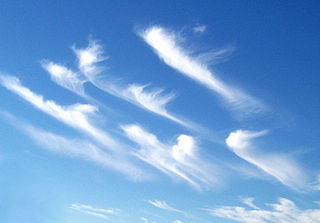
Wind shear, sometimes referred to as wind gradient, is a difference in wind speed and/or direction over a relatively short distance in the atmosphere. Atmospheric wind shear is normally described as either vertical or horizontal wind shear. Vertical wind shear is a change in wind speed or direction with a change in altitude. Horizontal wind shear is a change in wind speed with a change in lateral position for a given altitude.

The Meteorological Office, abbreviated as the Met Office, is the United Kingdom's national weather service. It is an executive agency and trading fund of the Department for Science, Innovation and Technology and is led by CEO Penelope Endersby, who took on the role as Chief Executive in December 2018 and is the first woman to do so. The Met Office makes meteorological predictions across all timescales from weather forecasts to climate change.

In meteorology, the planetary boundary layer (PBL), also known as the atmospheric boundary layer (ABL) or peplosphere, is the lowest part of the atmosphere and its behaviour is directly influenced by its contact with a planetary surface. On Earth it usually responds to changes in surface radiative forcing in an hour or less. In this layer physical quantities such as flow velocity, temperature, and moisture display rapid fluctuations (turbulence) and vertical mixing is strong. Above the PBL is the "free atmosphere", where the wind is approximately geostrophic, while within the PBL the wind is affected by surface drag and turns across the isobars.
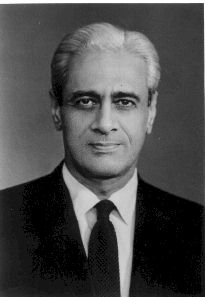
Satish Dhawan was an Indian mathematician and aerospace engineer, widely regarded as the father of experimental fluid dynamics research in India. Born in Srinagar, Dhawan was educated in India and further on in United States. Dhawan was one of the most eminent researchers in the field of turbulence and boundary layers, leading the successful and indigenous development of the Indian space programme. He succeeded M. G. K. Menon, as the third chairman of the Indian Space Research Organisation (ISRO) in 1972.

The Journal of Applied Meteorology and Climatology is a scientific journal published by the American Meteorological Society. Applied research related to the physical meteorology, cloud physics, hydrology, weather modification, satellite meteorology, boundary layer processes, air pollution meteorology, agricultural and forest meteorology, and applied meteorological numerical models of all types.
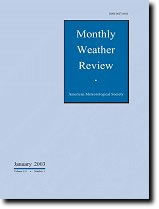
The Monthly Weather Review is a peer-reviewed scientific journal published by the American Meteorological Society. It covers research related to analysis and prediction of observed and modeled circulations of the atmosphere, including technique development, data assimilation, model validation, and relevant case studies. This includes papers on numerical techniques and data assimilation techniques that apply to the atmosphere and/or ocean environment. The editor-in-chief is David M. Schultz.
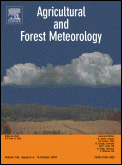
Agricultural and Forest Meteorology is a peer-reviewed scientific journal covering research on the relationships between meteorology and the fields of plant, animal, and soil sciences, ecology, and biogeochemistry. The editor-in-chief is Claudia Wagner-Riddle.
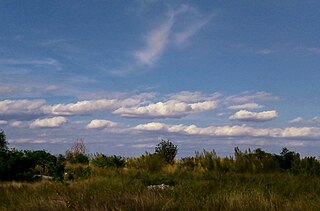
Horizontal convective rolls, also known as horizontal roll vortices or cloud streets, are long rolls of counter-rotating air that are oriented approximately parallel to the ground in the planetary boundary layer. Although horizontal convective rolls, also known as cloud streets, have been clearly seen in satellite photographs for the last 30 years, their development is poorly understood, due to a lack of observational data. From the ground, they appear as rows of cumulus or cumulus-type clouds aligned parallel to the low-level wind. Research has shown these eddies to be significant to the vertical transport of momentum, heat, moisture, and air pollutants within the boundary layer. Cloud streets are usually more or less straight; rarely, cloud streets assume paisley patterns when the wind driving the clouds encounters an obstacle. Those cloud formations are known as von Kármán vortex streets.
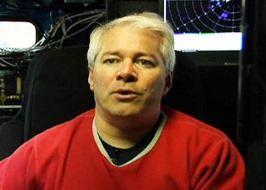
Joshua Michael Aaron Ryder Wurman is an American atmospheric scientist and inventor noted for tornado, tropical cyclone, and weather radar research.

Earth and Planetary Science Letters (EPSL) is a bimonthly peer-reviewed scientific journal covering research on physical, chemical and mechanical processes of the Earth and other planets, including extrasolar ones. Topics covered range from deep planetary interiors to atmospheres. The journal was established in 1966 and is published by Elsevier. The co-editors-in-chief are J. Adkins, J.P. Avouac, R. Bendick, L. Derry, M. Ishii, T.A. Mather, W.B. McKinnon, F. Moynier, Chiara Maria Petrone, Hans Thybo, Alexander Webb.
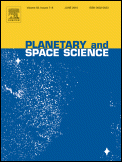
Planetary and Space Science (P&SS), published 15 times per year, is a peer-reviewed scientific journal established in 1959. It publishes original research articles along with short communications (letters). The main topic is Solar System processes which encompasses multiple areas of the natural sciences. Numerical simulations of solar system processes are also conducted at ground-based facilities or on-board space platforms. The editor-in-chief is Maria Cristina De Sanctis. It is published by Elsevier.

Lakshminarayanapuram Ananthakrishnan Ramdas was an Indian physicist and meteorologist, known for discovering the atmospheric phenomenon of the Ramdas layer or Lifted Temperature Minimum where the lowest temperature in the atmosphere is not on the ground but a few tens of centimeters above the ground resulting. This can be seen in thin layer fogs which are at some height above the ground. He has been called the father of agricultural meteorology in India.
Joost Alois Businger is a Dutch-American meteorologist. He is an emeritus professor at the University of Washington. Businger is best known for his work on atmospheric boundary layer (ABL).
Christine Susan Betham Grimmond is a New Zealand scientist and professor of urban meteorology at the University of Reading. She currently holds the post of Met Office Joint Chair. Grimmond is a pioneer of the fields of urban meteorology and micrometerology, which deal with the atmospheric boundary layer.

Jenni L. Evans is a Professor of Meteorology and Atmospheric Science at Pennsylvania State University, Director of the Institute for CyberScience and President of the American Meteorological Society. She was elected a Fellow of the American Meteorological Society in 2010 and the American Association for the Advancement of Science in 2019.
William Christopher Swinbank was a British-born meteorological physicist who worked at the UK Meteorological Office, the CSIRO Australia and the NCAR Colorado. His main areas of research were fog prediction, upper atmosphere analysis, wind predictions, hail storms and turbulent fluxes.

















